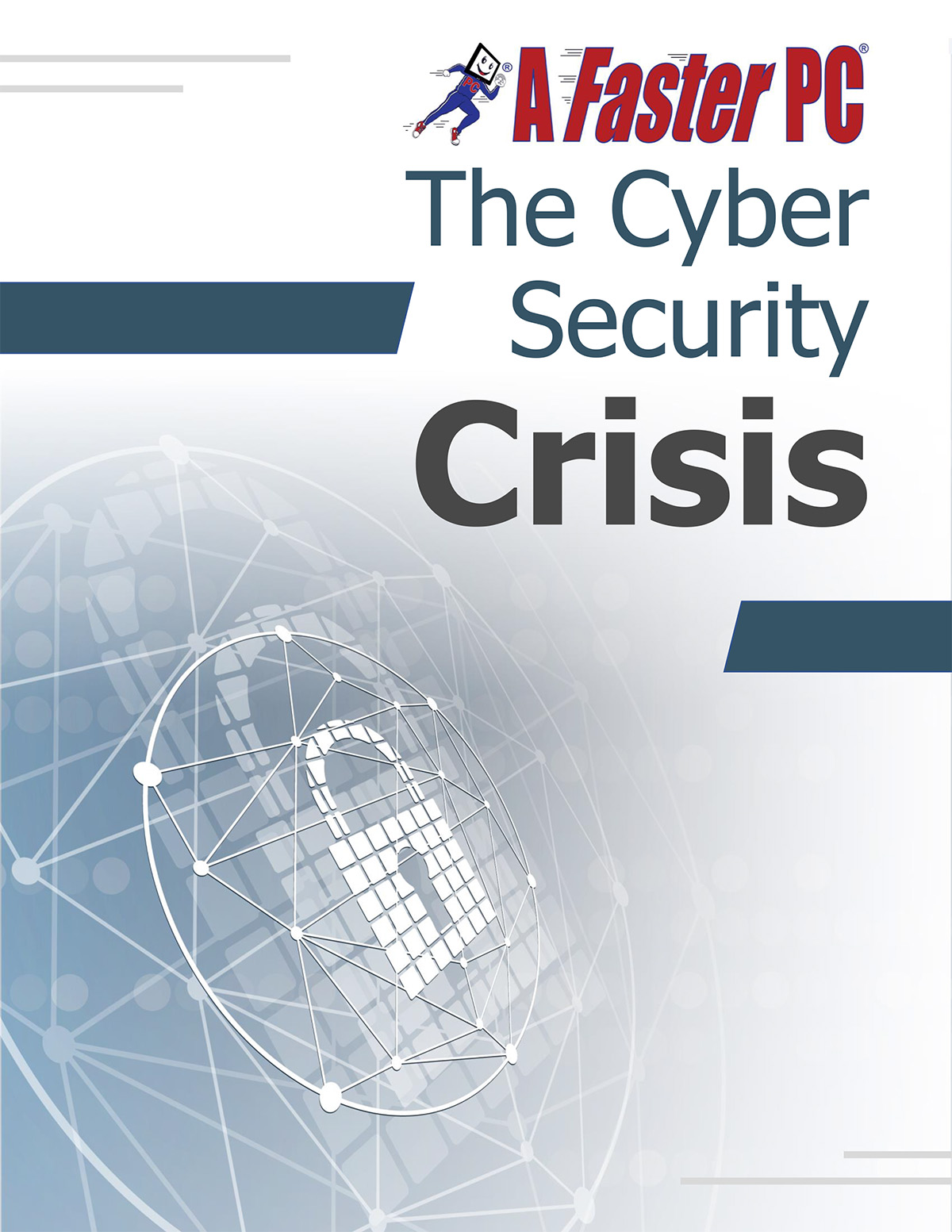
Protect Your Data & Stay Safe Online: Cybersecurity & Backup Guide
In today’s digital world, cybersecurity threats are evolving rapidly, and data loss can happen in an instant—whether from ransomware, hardware failure, or human error. On A Faster PC Live Technical Support, we recently covered critical cybersecurity threats and backup strategies to keep your data safe. Below, we break down the key takeaways in an easy-to-follow guide.
Why Backups Are Essential
Imagine waking up to find all your files encrypted by ransomware, your hard drive failed, or your backup was destroyed in a fire. Without a proper backup, recovering your data could be impossible—or cost thousands in recovery fees.
What Your Backup Should Protect Against
- Hardware Failure – Hard drives crash, motherboards fail, and SSDs wear out.
- Theft – If your computer is stolen, your backup shouldn’t be sitting right next to it.
- Fire & Natural Disasters – A backup in the same location is useless if everything burns down.
- Human Error – Accidentally deleting or corrupting a file? Roll back to a previous version.
- Ransomware – Hackers encrypt your files and demand payment. A backup lets you restore without paying.
- Sabotage – Disgruntled employees or hackers may intentionally delete data.
Backup Solutions That Work
- Manual Copies (Not Recommended) – Requires discipline, easy to forget, and doesn’t protect against ransomware.
- Cloud Backup (OneDrive, Google Drive) – Convenient but limited (e.g., 30-day version history). Hackers can delete cloud files if they access your account.
- Managed Cloud Backup (Best for Businesses) – Automatic, encrypted, off-site backups with long-term version history (years, not just weeks).
Example: Restoring Files with OneDrive
If a file is corrupted or encrypted by ransomware:
- Right-click the file in OneDrive.
- Select Version History.
- Restore a previous unencrypted version.
(Note: This only works if the ransomware hasn’t already encrypted older versions!)
6 Critical Cybersecurity Threats You Must Patch Now
Cybercriminals are actively exploiting these vulnerabilities. If you use any of these systems, update them immediately:
1. Fortinet Firewall Exploit (Active Attacks!)
- Risk: Hackers can take over your network via a SQL injection flaw in the HTTP authorization header.
- Impact: At least 160 systems were compromised in 48 hours (July 14–15).
- Fix: Install Fortinet’s latest security patches.
2. Cisco Identity Services Engine (ISE) Vulnerability
- Risk: Attackers can execute arbitrary code with root access (full control of your system).
- How: Sending a malicious API request.
- Fix: Patch Cisco ISE immediately—even though no attacks are reported yet, they’re coming.
3. Windows Server 2025 "Golden DMSA" Attack
- Risk: Hackers can generate passwords for any Delegated Managed Service Account (DMSA) in Active Directory.
- Impact: Enables stealthy lateral movement (hackers jumping from system to system).
- Fix: Apply Microsoft’s latest updates.
4. Google Chrome Zero-Day Exploit (Active in the Wild)
- Risk: Malicious websites can escape Chrome’s sandbox and run arbitrary code.
- How: Exploits flaws in ANGLE & GPU components.
- Fix: Update Chrome immediately.
5. SonicWall SMA Appliances Under Attack
- Risk: Hackers (UNC 6148 group) are stealing admin credentials and gaining shell access via SSL VPN.
- Fix: Monitor for suspicious activity—even fully patched systems may be at risk.
6. eSIM Vulnerability in IoT Devices
- Risk: Attackers with physical access can extract cryptographic keys from eSIM chips.
- Impact: Affects smartphones, medical devices, and industrial systems.
- Fix: Check for firmware updates from manufacturers.
How to Protect Yourself
- Enable Automatic Updates – For OS, browsers, firewalls, and firmware.
- Use a Managed Backup Solution – Don’t rely on manual backups.
- Enable Multi-Factor Authentication (MFA) – Prevents unauthorized account access.
- Train Employees on Phishing – Many attacks start with a malicious email.
- Work with a Cybersecurity Expert – If managing this sounds overwhelming, get professional help.
Need Help?
If you’re concerned about ransomware, data loss, or cybersecurity threats, A Faster PC can help!
🔹 Schedule a Free Discovery Call: www.AFasterPC.com
🔹 Call Us: 772-878-5978
Don’t wait until it’s too late—protect your data today!
Listen to the Full Episode:
📻 A Faster PC Live Technical Support (Saturdays, 10–11 a.m.)
Computer problems? You need A Faster PC!
Get Protected Today:
For IT support, managed services, patch management, and cybersecurity, contact A Faster PC:
📞 Call us: 772-878-5978.
🛡️ Download Our FREE Cybersecurity Report.
💻 Get tech support help today!
🌐 Sign Up for Our FREE 'Cyber Security Tip of the Week'
🔒 Need help with password management? You need A Faster PC! If you want to take your cybersecurity to the next level, call A Faster PC at 772-878-5978 or visit AFasterPC.com today.



